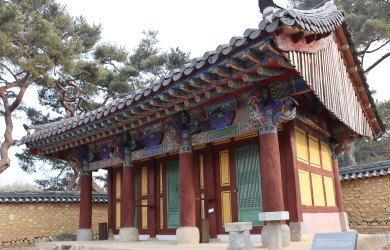Stories of Korea’s nine seowon
Introduction to 9 seowon, UNESCO World Heritage Sites
Built voluntarily by the sarimNamgyeseowon Hamyang (Historic Site No. 499)
Visitors to this seowon are greeted by an old, familiar, and positive energy.
The question of location is a very important one in the construction of a seowon, and the location of Namgyeseowon is the best possible answer to this question.
All sound files
Important functions of seowon
- Outline
- Veneration
- Learning
- Interaction
- Other aspects
Outline
Visitors to this seowon are greeted by an old, familiar, and positive energy.
The question of location is a very important one in the construction of a seowon, and the location of Namgyeseowon is the best possible answer to this question.
The question of location is a very important one in the construction of a seowon, and the location of Namgyeseowon is the best possible answer to this question.

Scenery of Namgyeseowon
Jeong Yeo-chang, the individual who is honored by Namgyeseowon’s shrine, was a prominent sarim scholar of early Joseon who studied under Kim Jong-jik. Jeong spent three years at Jirisan Mountain to immerse himself in Neo-Confucianism and later served as the teacher of Yeongsangun (while he was crown prince). Jeong stressed the need for politicians to be morally upright for the creation of an ideal Confucian society. In the purge of 1498 (Muo sahwa), Jeong was exiled to Hamgyeong-do for having been a student of Kim Jong-jik and died in exile in 1504. Jeong is also enshrined at Seonggyungwan’s Munmyo as one of Korea’s five prominent Confucian scholars (nicknamed “five wise men of the East”), along with Kim Goeng-pil, Cho Gwang-jo, Yi Eon-jeok, and Yi Hwang.
Sau
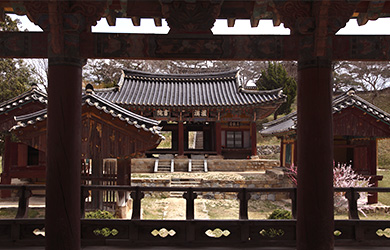
Myeongseongdang
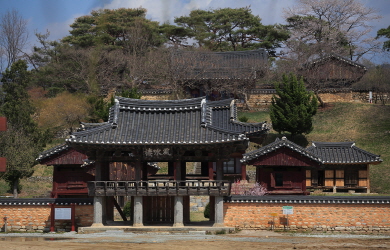
Pungyeongnu
Namgyeseowon was a center of uibyeong (righteous soldier) activity in the Gyeongsangnam-do region that resisted the Japanese invasions that occurred in the late 16th century. It was burned to the ground in 1595 by Japanese forces, but rebuilt after the war through the joint efforts of Hamyang residents. It faces the clear waters of Namgyecheon Stream and a wide, open plain and is positioned on a sloping plot of land at the foot of Yeonhwasan Mountain. Its layout was the first in Korea to follow the prototypical design of the Korean seowon, with the learning space in the front and shrine at the rear—the highest spot in the seowon. The layout of Namgyeseowon was copied by many subsequently built seowon.
After passing by the hamabi (stone monument that instructs the passer-by to get down from their horse) and Hongsalmun red spiked gate of the seowon and going up the steps of Pungyeongnu, the main gate, visitors see a framed inscription that reads: “The view is open on all sides. There is a wide field and stream that flows around the area. The forest, which is far off, is verdant. The sunset in the evening is beautiful.”
After passing Pungyeongnu, one can see two small ponds, one each on the eastern and western ends. Behind these are the student dormitories, Yangjeongjae and Boinjae, and two pavilions, Aeryeonheon and Yeongmaeheon. The pond, which bears the fragrance of lotus flowers and cherry blossoms, is positioned close to the learning space to provide a small resting place—an arrangement rarely seen in seowon construction. Behind this is Myeongseongdang, which has two name boards that each bear half of the seowon’s name (“Namgye” and “seowon”) in Chinese characters. To the right of Myeongseongdang is Gyeongpangak, a structure made entirely out of wooden planks that stores the seowon’s books and woodblocks. If you walk along the path between Myeongseongdang and Gyeongpangak, you will come face to face with a steep stairway, at the top of which is the shrine (sadang). Namgyeseowon was the first to position its shrine physically much higher above the learning space as a show of respect for those enshrined in it. In front of the shrine are Gwansedae and Jeongnyodae: Gwangsedae is a place for people to wash their hands before entering the shrine, while Jeongnyodae was a place for burning oil or resin-laden pine branches at night.
After passing Pungyeongnu, one can see two small ponds, one each on the eastern and western ends. Behind these are the student dormitories, Yangjeongjae and Boinjae, and two pavilions, Aeryeonheon and Yeongmaeheon. The pond, which bears the fragrance of lotus flowers and cherry blossoms, is positioned close to the learning space to provide a small resting place—an arrangement rarely seen in seowon construction. Behind this is Myeongseongdang, which has two name boards that each bear half of the seowon’s name (“Namgye” and “seowon”) in Chinese characters. To the right of Myeongseongdang is Gyeongpangak, a structure made entirely out of wooden planks that stores the seowon’s books and woodblocks. If you walk along the path between Myeongseongdang and Gyeongpangak, you will come face to face with a steep stairway, at the top of which is the shrine (sadang). Namgyeseowon was the first to position its shrine physically much higher above the learning space as a show of respect for those enshrined in it. In front of the shrine are Gwansedae and Jeongnyodae: Gwangsedae is a place for people to wash their hands before entering the shrine, while Jeongnyodae was a place for burning oil or resin-laden pine branches at night.
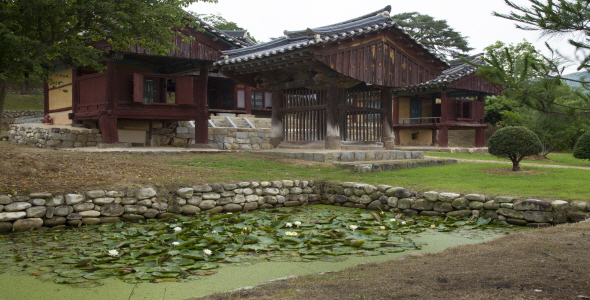
Pond
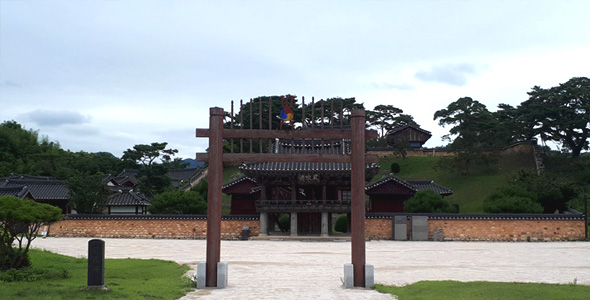
Hongsalmun
Veneration at Namgyeseowon
Before each ritual at Namgyeseowon, the seowon’s director and about 30 literati of Hamyang gathered to select the ritual’s officiants. In most seowon rituals, rice was not cooked; instead, raw rice and millet were put into the ceremonial bowls. At Namgyeseowon, however, the rice and millet were cooked and stacked high in the bowls. The way in which the heongwan raised his cup was also different. Liquor was poured three times from the liquor vessel, after which he bowed twice. After the ritual, the participants ate breakfast without performing the eumbokrye. Chunchuhyangsa is still held every February and August.
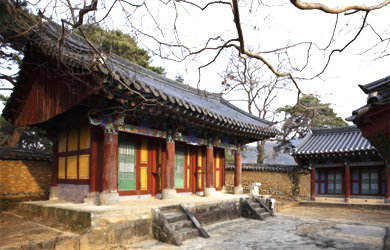
Sau
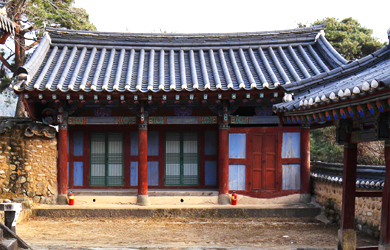
Jeonsacheong
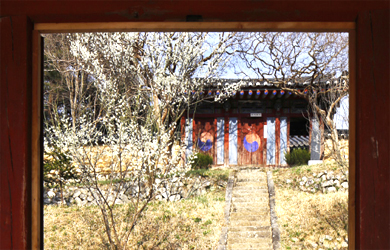
Naesammun
Venerated individuals
Jeong Yeo-chang, who spent several years at Jirisan Mountain studying Neo-Confucianism, ultimately lost his life while fighting the political group in power at the time, insisting that an ideal Confucian society must be founded on the moral fortitude of the ruling members.
Kang Ik (1523-1567) and Jeong On (1569-1641) spearheaded the construction of Namgyeseowon. They were prominent local sarim members who strived to teach and practice the ideals of Neo-Confucianism.
Jeong On passed the civil service examination (taking first place) at a relatively late age, after having studied under multiple teachers. After he had served in several key positions, the Manchu Invasion occurred. Once King Injo surrendered, Jeong attempted to commit suicide by self-disembowelment, according to the literati’s code of honor and allegiance. Having failed to do so, Jeong retired to his hometown and spent the rest of his life in isolation.
Kang Ik, Jeong’s maternal uncle, never sought to occupy a high government position and devoted himself to academic inquiry, for which he was highly regarded by his teacher, Cho Jik, who said, “I don’t know about others, but I definitely trust Kang Ik.”
In the shrine, Jeong Yeo-chang is in the center, with Kang Ik on the right and Jeong On on the left.
Kang Ik (1523-1567) and Jeong On (1569-1641) spearheaded the construction of Namgyeseowon. They were prominent local sarim members who strived to teach and practice the ideals of Neo-Confucianism.
Jeong On passed the civil service examination (taking first place) at a relatively late age, after having studied under multiple teachers. After he had served in several key positions, the Manchu Invasion occurred. Once King Injo surrendered, Jeong attempted to commit suicide by self-disembowelment, according to the literati’s code of honor and allegiance. Having failed to do so, Jeong retired to his hometown and spent the rest of his life in isolation.
Kang Ik, Jeong’s maternal uncle, never sought to occupy a high government position and devoted himself to academic inquiry, for which he was highly regarded by his teacher, Cho Jik, who said, “I don’t know about others, but I definitely trust Kang Ik.”
In the shrine, Jeong Yeo-chang is in the center, with Kang Ik on the right and Jeong On on the left.
Learning at Namgyeseowon
Hamyang, which was well-known as “the city of the literati,” prioritized manners and learning. It was said that “everyone in the village is well-mannered, with each family educating their children in the Book of Poetry and Book of Documents.”
Namgyeseowon frequently held academic gatherings with reputable scholars such as Cho Sik and Oh Geon. The gatherings, which usually included 20 to 30 people, were known for the extremely high level of learning they pursued. Heated discussions were held on the key principles of Neo-Confucianism. Most members were scholars of the “Nammyeong” school, which led to debates on the fundamental goal of the Nammyeong ideology.
Namgyeseowon frequently held academic gatherings with reputable scholars such as Cho Sik and Oh Geon. The gatherings, which usually included 20 to 30 people, were known for the extremely high level of learning they pursued. Heated discussions were held on the key principles of Neo-Confucianism. Most members were scholars of the “Nammyeong” school, which led to debates on the fundamental goal of the Nammyeong ideology.
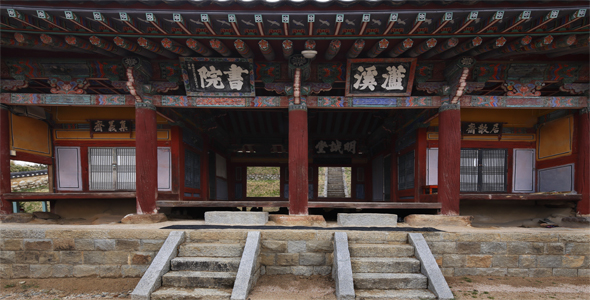
Myeongseongdang
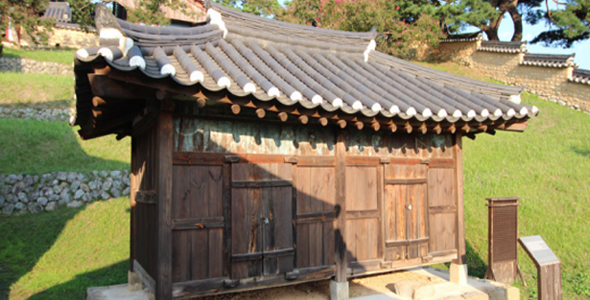
Gyeongpangak
Interaction at Namgyeseowon
Literati would go to Namgyeseowon’s main gate, Pungyeongnu, to write poems, play instruments, and sing while enjoying the fresh outside air to take a break from the rigors of academic learning and refresh their bodies and minds. The Dongjae and Seojae of the learning space each has its own narrow pavilion: Aeryeonheon and Yeongmaeheon. Students discussed literature, arts, and their futures while enjoying the fragrance of lotus flowers and cherry blossoms at these pavilions.
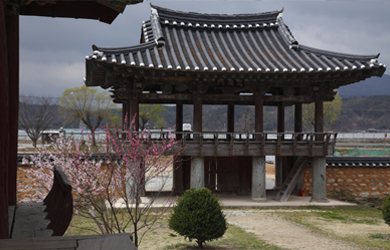
Pungyeongnu
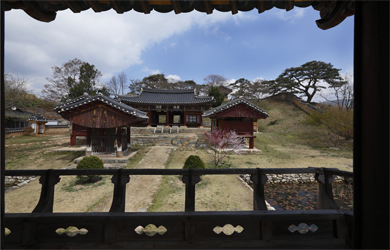
Scenery of Pungyeongnu

Pond
Other aspects (cultural heritage items and memorial objects)
Namgyeseowon was designated as a Tangible Cultural Heritage of Gyeongsangnam-do (No. 91) in 1974 and a (national) Historic Site (No. 499) in 2009. It also houses two Tangible Cultural Heritage items of Gyeongsangnam-do: Woodblocks of Writings of Ildu (No. 166) and Woodblocks of Writings of Gaeam (No. 167). It also has a well-organized collection of books spanning 317 volumes under 59 titles, including Eojeong Ogyeong Baekpyeon and Buborok.
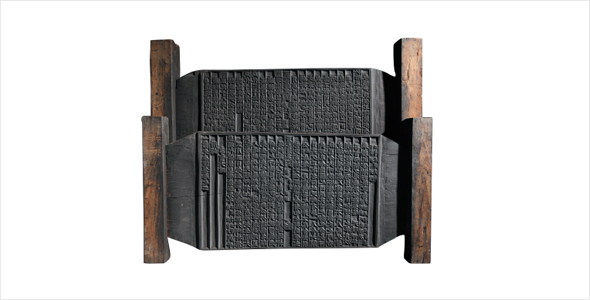
Printing blocks of writings of Ildu (Gyeongsangnam-do Tangible Cultural Treasure No. 166)
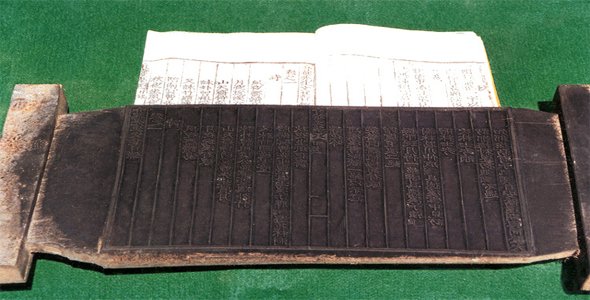
Printing blocks of writings of Gaeam (Gyeongsangnam-do Tangible Cultural Treasure No. 167)

